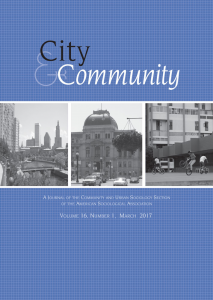Restorative Justice and Transformative Justice: Definitions and Debates
As explained by Walker (2013), modern restorative justice (RJ) began in the 1970s with the revitalization of the idea that victims and offenders need to come together and talk about what happened in an effort to achieve peace and (hopefully) restoration. While such a thought seems somewhat revolutionary in our day of overly punitive justice, RJ was the primary method used to handle offenses in pre-modern times. In fact, it was not until the Norman Conquest in 1066 that RJ...





1756-2589/asset/NCFR_RGB_small_file.jpg?v=1&s=0570a4c814cd63cfaec3c1e57a93f3eed5886c15)